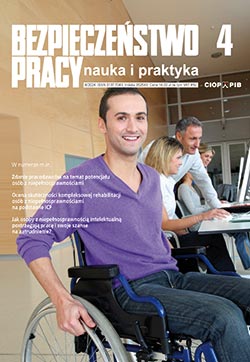Fire and explosive properties of plant materials used in the production of compound feed
Maciej Celiński, Agnieszka Gajek, Michał Gloc
Extremely large scale of grain processing leads to a very high risk of incidents related to fire or dust explosion. Only in 2018 there were several outbreaks associated with the storage and transport of grain materials, the largest of which took place in May in South Sioux City, Nebraska.
Poland is one of the largest grain producers in Europe and in the world. The annual grain production in Poland is about 35 million tons, including about 10 million tons of wheat, 5 million tons of triticale, 4 million tons of barley and 1.5 million tons of oats. Such an amount of grain material means that there is a high probability of failure during the storage processes (i.e. drying, pouring), transport and processing. Current research shows that of all dust explosions, those related to the food-agricultural and fodder industry account for nearly 25%. The most vulnerable are silos, dedusting and ventilation systems (including dryers and warehouses for drying grains). In October 2013, in the BulkTerminal in Gdańsk, there was an explosion and fire in a grain silo. The rescue operation lasted nearly 4 hours and about 10 tons of grain have burned (20% of the total stored grain material). The purpose of this article is to describe the results of research on the phenomenon of flammability and explosibility of industrial dusts on the four most popular grains in Poland.
Flash point vs. explosiveness points: a study in the similarity of chosen parameters of hazardous substances’ explosiveness
Michał Grabarczyk, Katarzyna Bogdan
The article discusses the similarities and differences between two explosiveness parameters, i.e. flash point and explosion point. Literature overview, experimental measurements and computational studies were performed on the explosion point parameter, which is also called temperature flammability limits. Research was conducted in accordance with the PN-EN 15794 standard, which specifically refers to determining the explosion point parameter of flammable liquids. The article also contains the authors’ insight on the measurements methodology, as well as accuracy validation of various estimation methods. The obtained results can be used for explosion protection of technological processes which involve flammable liquids.
Management according to resilience engineering and lean management concepts – comparison from OSH perspective
Małgorzata Pęciłło
Resilience engineering and lean management are management concepts that use a different philosophy. While lean management deals, to a large extent, with the optimization of the functioning of an organization in a particular state and operating in a given environment, the task that resilience engineering sets itself is to prepare the organization to avoid or face difficulties, including unpredictable ones. The article attempts to answer the question to what extent these concepts on theoretical grounds are mutually exclusive, and how they can be treated complementarily.
Travelers’ exposure to vibrations and noise depending on the type of transport – the results of pilot research
Magdalena Matys, Kamil Piotrowski, Dominik Mleczko, Paweł Pawlik
For some time residents of big cities have been encouraged to change their means of transport, that is, to swap passenger cars for public transport vehicles. This is meant to help to reduce the problems associated with heavy traffic and air pollution. The authors of the article decided to check if such a change is also beneficial from the point of view of comfort and health of a person who uses public transport. For this purpose values of vibration acceleration and sound pressure level to which Cracow’s commuters are exposed to have been analyzed, depending on the type of vehicle they choose. In this respect measurements have been carried out for passenger cars, buses and trams. Two vehicle models of each type, significantly different from each other (old and new) have been selected for the tests. The measurements during a few trips in each type of vehicle on a predetermined route have been conducted. This article presents a comparison of measured values of vibroacoustic parameters in the time domain. It attempts to assess vibration and noise parameters, taking into account their impact on the health and comfort of the traveler.




























